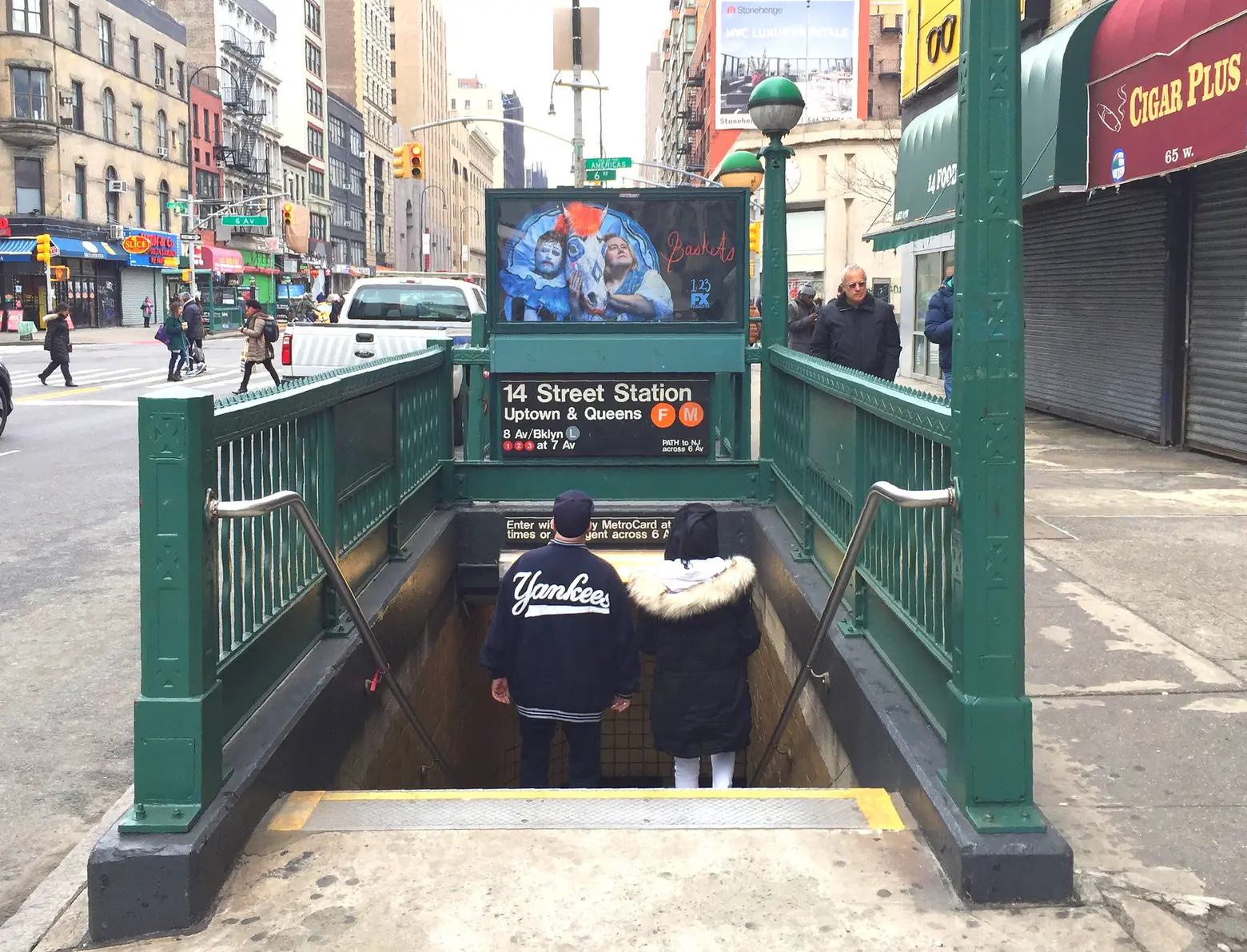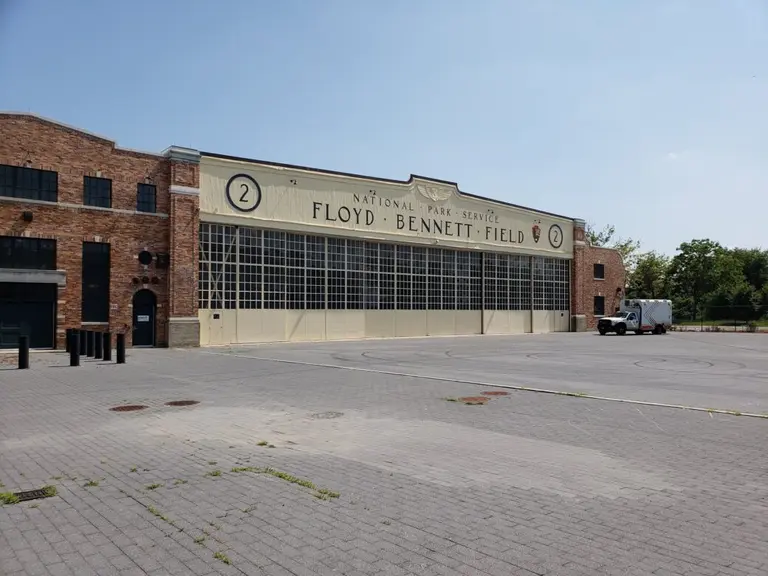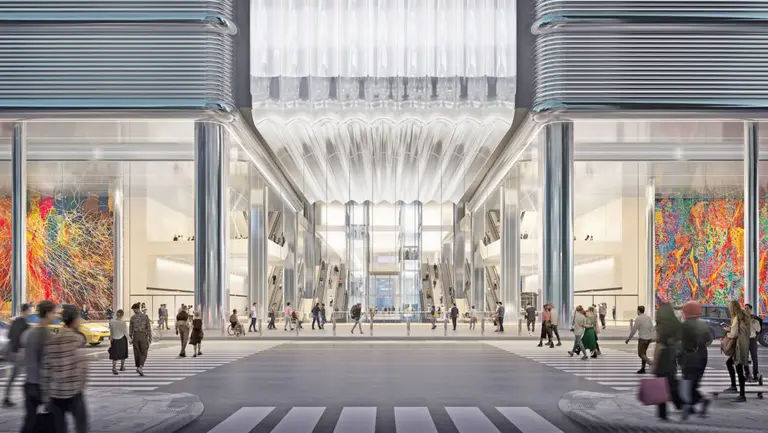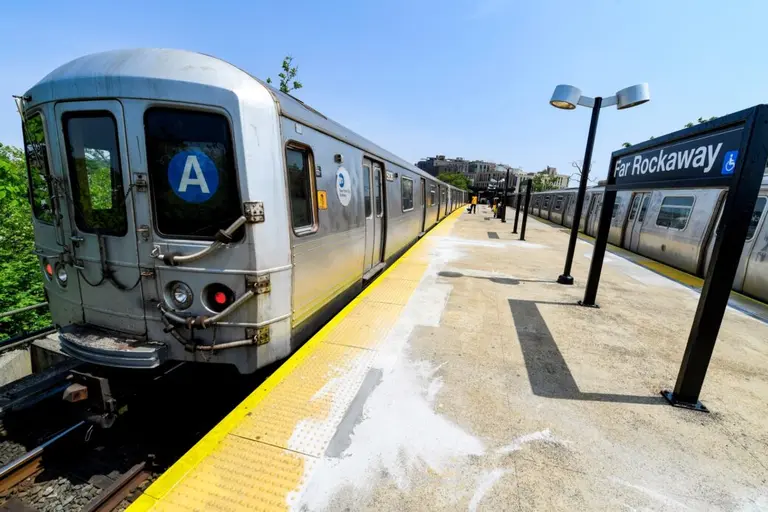NYC announces plan to stop homeless New Yorkers from sheltering on the subway

Photo by Charles16e on Flickr
New York City will increase enforcement of certain rules in the subway system as part of a broader safety plan to address homelessness announced by Mayor Eric Adams and the MTA on Friday. The NYPD will boost their enforcement of the “rules of conduct,” which includes the prohibition of lying down or sleeping in a way that interferes with others, exhibiting aggressive behavior, spitting, smoking, using drugs, and “using the subway for any purpose other than transportation,” according to the 17-page plan. “No more just doing whatever you want,” Adams said on Friday. “Those days are over. Swipe your MetroCard, ride the system, and get off at your destination.”
Announced by Adams and Gov. Kathy Hochul in a joint press conference, the new plan, which also involves deploying more mental health professionals to the system, creating new drop-in centers close to stations, and requiring riders to leave the train at the end of the line, comes after several high-profile violent incidences involving homeless New Yorkers in the transit system and as officials hope to continue New Yorkers to return to the subway.
The city will deploy teams made up of people from the Department of Homeless Services, the Health Department, the NYPD, and community-based providers to “high-need” locations to better engage with those experiencing homelessness. Five community-based homeless outreach teams will be deployed at Penn Station, Grand Central Terminal, West 4th Street, the West 42nd Street corridor, the Fulton Street corridor, and Jamaica Center to canvas the area and help those find other places to take shelter.
The plan also calls for “End of the Line” teams that will require those aboard to leave the train when it reaches its terminus. This will begin on the A, E, 1, 2, N, R lines, NYPD Commissioner Keechant Sewell said Friday.
In January, Hochul and Adams deployed more police officers to the subway to tackle street homelessness, along with specially trained “Safe Options Support” officials to offer support services and shelter to those in need. Police officers have been directed to enforce the MTA and NYC Transit’s “rules of conduct.”
“Our goal is corrective action, not removal, and we will give individuals an opportunity to remedy their behavior before taking further action,” the mayor’s Subway Safety plan read. “Yet for individuals in need of care who violate these rules, enforcement cannot and will not be the long-term solution. We must take this moment to engage these New Yorkers and help them on a path towards housing, care, and support, with the City seamlessly coordinating every step of the way.”
The city will be creating new drop-in centers near subway stations, deploying additional “Street Health Outreach & Wellness” (SHOW) vans, and increasing the availability of safe haven beds and stabilization beds.
The state will be investing $27.5 million annually for inpatient psychiatric beds, $9 million annually to recruit psychiatrists and psychiatric nurse practitioners, and $12.5 million annually for 500 additional supportive housing beds, Hochul announced during Friday’s event. According to the New York Times, the number of adults at hospital state institutions in New York City between 2019 and 2019 dropped from 4,100 to 3,000, after Medicaid reimbursements were cut for longer psychiatric stays.
“For too long our mental healthcare system suffered from disinvestment, and the pandemic has only made things harder for New Yorkers with serious mental illness who are experiencing homelessness,” Hochul said. “I am proud to stand with Mayor Adams and share our efforts to boost mental health treatment services for those who lack stable housing, and bring more psychiatric beds online. We must work together to keep our subways — the lifeblood of New York City — safe for all riders, and to get help and services to those in need.”
While advocates applauded the restoration of psychiatric inpatient beds that were converted for Covid care, there is concern over criminalizing homelessness.
“Repeating the failed outreach-based policing strategies of the past will not end the suffering of homeless people bedding down on the subway. It is sickening to hear Mayor Adams liken unsheltered homeless people to a cancer. They are human beings,” Shelly Nortz, deputy executive director for policy with Coalition for the Homeless, said in a statement.
“The Mayor’s own police department recently noted that those who shelter in the transit system are there because they believe they have no safer alternative. Criminalizing homelessness and mental illness is not the answer.”
This latest effort comes about a month after a mentally-ill homeless man shoved Michelle Alyssa Go in front of a train at Times Square, killing her, as the New York Times reported.
RELATED:




























